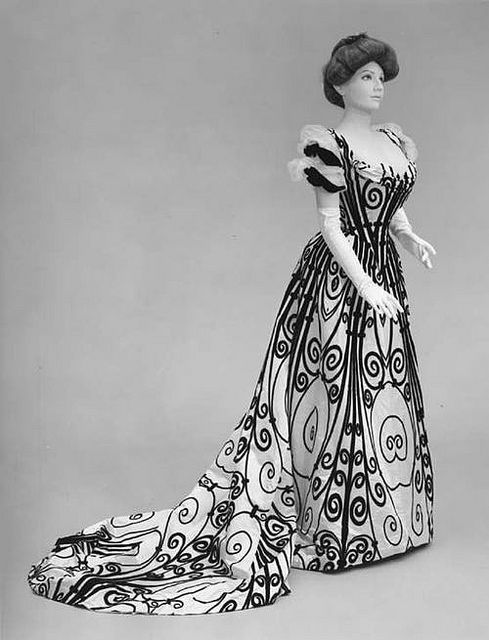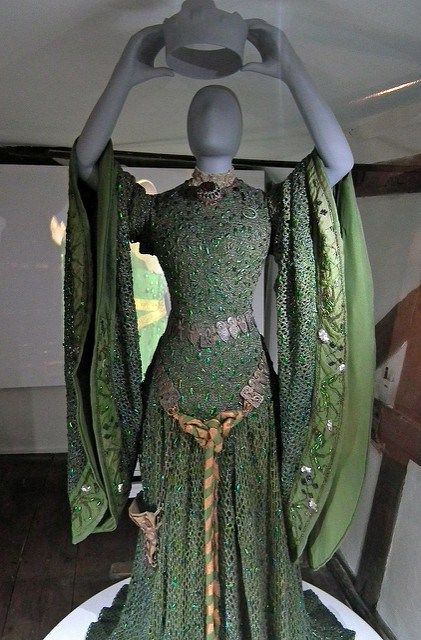Once I had my mockup, it was time to cut into my actual fabrics. Unfortunately, this was easier said than done. Due to the differing stretch of the fabrics along the vertical and horizontal axes I had to be careful to cut my pattern pieces in specific directions, which (given the size of some of my pieces) was tough and didn’t always allow me to maximize my use of the fabric’s area. Since my bodice pieces were the smallest of all, I resigned myself to fitting them in around the larger, more oddly-shaped pieces, which I cut out first.
I had 6 yards of my kelly green gauze (42″ wide after shrinking), and 7 yards of my dark green crochet lace (54″ wide). Sadly, while I ended up having just* enough crochet lace to cut out my dress (with judicious piecing of the two center back bodice panels), I did not have enough gauze to make my underskirt. After cutting the gigantic sleeves out there just wasn’t enough fabric to make the skirt flare properly, and since I’d decided in the interim to change my plans for the sleeve trim I needed extra for that as well. I’ve ordered more fabric to re-cut the underskirt and do the sleeve trim (4 yards to be extra safe) and I’ll have to try to dye it to match, which will be incredibly annoying, but not as annoying as if I’d had to match the crochet lace color. At least any slight color difference will be less obvious since it’ll be somewhat hidden by the extra folds of the overskirt.
That being said, I did manage to cut out everything from my crochet lace, and since I’d never worked with a full lace overlay before, much less fabric as weird as this one, I was a bit concerned that things could get ugly. I decided to take some precautions, underlining every single piece with tulle to minimize the lace pulling out of shape, and basting everything together as I went.
I cut my lining pieces first from the cotton gauze, and then laid out my crochet lace face down on the carpeted floor (the carpet really helped keep the fabric from slipping out of alignment), smoothing a layer of pale green tulle over it. Then I set my lining pieces on top of both layers of fabric and pinned them in place through all layers before cutting around them. Once they were cut I hand-basted around each piece to keep things from shifting.

For the bodice, I basted through all three layers since I’ll be assembling the panels into a bodice before adding the beetlewings– I haven’t decided yet whether I’ll try to stitch the wings just to the top two layers, or go through all three, but either way the pieces are small enough that I can work with the bodice as a single piece without too much trouble. For the sleeves and skirt, however, I’ll be adding the wings before assembly, so I need to keep the lining pieces separate.
* FYI, here’s a photo of all of my scraps from the crochet lace. This is out of a full seven yards of 54″ wide fabric– when I say I had “just enough,” I mean it!




















